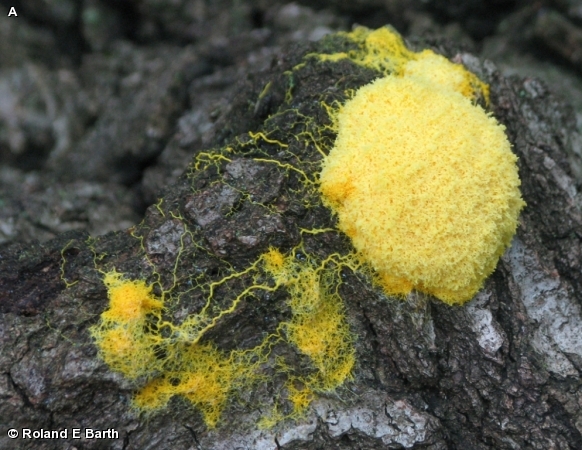
Many-Headed Slime
Physarum polycephalum
PHYSACACEAE (PHYSACACEAE)
This slime mold is bright yellow in color. It is many branched, veined, fan-shaped and sheet like. It is constantly expanding and contracting in the process producing many grapelike heads on unbranched stalks (see Photo A). The heads are roundish, brain-shaped to clustered.
Usually found in damp, shady areas of temperate forests, although they may move to bright areas to “fruit.” Usually found June to October on dead wood and fleshy fungi. Its occurrence in Fontenelle Forest is not known.
Spores can remain dormant for years if necessary. The main vegetative phase of P. polycephalum is the plasmodium (the active, streaming form of slime molds). The plasmodium consists of networks of protoplasmic veins, and many nuclei. It is during this stage that the organism searches for food. The plasmodium surrounds its food and secretes enzymes to digest it. If environmental conditions cause the plasmodium to dry out during feeding or migration, Physarum will form what is called a sclerotium. The sclerotium is basically hardened multinucleated tissue that serves as a dormant stage, protecting Physarum for long periods of time. Once favorable conditions resume, the plasmodium reappears to search for food
The content of NatureSearch is provided by dedicated volunteer Naturalists of Fontenelle Forest who strive to provide the most accurate information available. Contributors of the images retain their copyrights. The point of contact for this page is: Eric Scholar.
